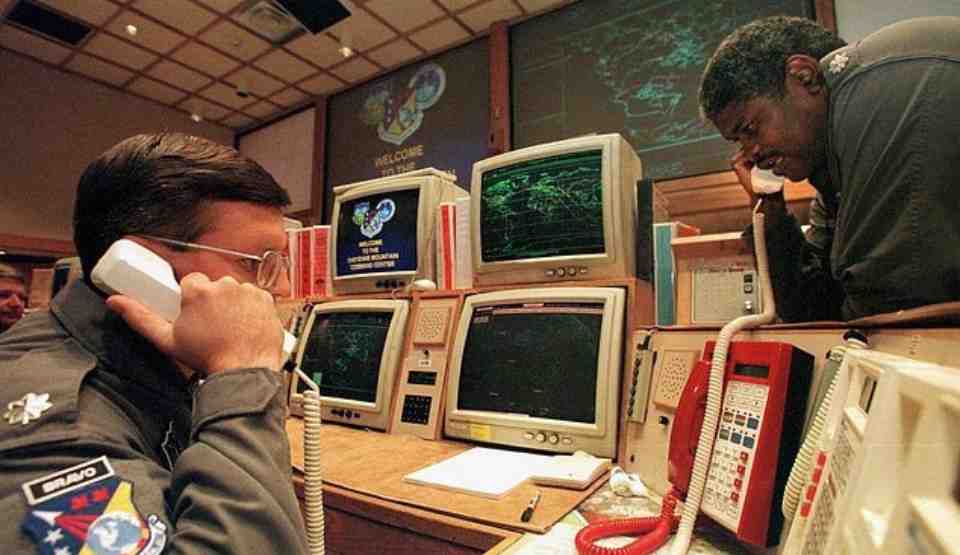Buried deep within the Colorado Rockies sits an extraordinary underground fortress built to ensure America’s leadership survives a nuclear catastrophe.
The Cheyenne Mountain Complex stands as a Cold War marvel—an entire subterranean city hollowed from nearly 700,000 tons of solid granite, engineered to endure direct nuclear impacts.
Since 1966, this hidden facility has maintained constant readiness to orchestrate American defenses should the worst-case scenario unfold.
Media access to the site has been severely restricted, with the most recent journalist tour occurring in 2018. Recently, however, military officials granted NewsNation rare permission to venture into this classified installation as global tensions intensify.
Beyond steel doors measuring three feet thick and through numerous security checkpoints, reporters witnessed the command center that officials claim could survive a nuclear detonation one thousand times more powerful than Hiroshima’s bomb, even at just one mile’s distance.
This complex transcends a simple shelter—it functions as a complete underground municipality. The facility operates its own power generation system, draws drinking water from subterranean lakes, and maintains food reserves sufficient to sustain personnel for extended periods.
Remarkably, a Subway restaurant operates within the complex, billing itself as the world’s most secure sandwich shop.
Gen. Gregory Guillot, who commands U.S. Northern Command and NORAD, emphasized to NewsNation that the installation remains as critical now as during its 1966 activation.
“It is truly worth whatever they paid for it back in the early ’60s, and we are using it today just as they did the decades before,” Guillot stated.
When questioned about contemporary threats—ranging from Russian aircraft testing American airspace to Chinese surveillance operations and cyber warfare—Guillot projected confidence.

“I don’t worry. We got the greatest military members working it,” he declared, adding pointedly: “And we are ready.”
The installation encompasses 5.1 acres housing 15 structures mounted on giant springs designed to dampen nuclear blast shockwaves.
Designated the “battle deck,” it would function as the operational nerve center for American and Canadian forces during a crisis.
Construction finished in 1966 at $142 million—a project that would exceed $1 billion in today’s currency. During the Cold War’s peak, it earned recognition as “the most secure place on Earth”—an intricate network of tunnels and reinforced chambers built to withstand Soviet nuclear strikes.
“We like to say it’s the most secure facility in the world,” Steve Rose, the installation’s deputy director, told journalists during a 2018 visit.
The granite and steel construction also protects electronic systems from electromagnetic pulses generated by nuclear explosions. Hydraulic systems can close the massive blast doors within 45 seconds—or manually during emergencies.
Though originally NORAD’s primary headquarters, the facility transitioned to an alternate command function in 2008, with main operations relocating to Peterson Space Force Base in Colorado Springs.
Staff members continue rotating through Cheyenne Mountain to maintain operational readiness, and officials reject any suggestion the facility is outdated.
“Couldn’t be farther from the truth,” Rose noted in 2018, highlighting that permanent NORAD teams still work there alongside cyber, space, and intelligence personnel.
The complex has achieved cultural prominence, featured in the 1983 film WarGames and the Stargate television franchise.
Should disaster strike, America’s survival protocols are thoroughly established.
The President would initially take shelter in the White House’s underground refuge, the Presidential Emergency Operations Center, per the White House Historical Association.
Given sufficient warning, he would then board an E-4B “Doomsday” aircraft—one of the Air Force’s airborne command platforms designed to preserve the chain of command even if Washington faces attack.
Accompanying the President would be essential officials: the Defense Secretary, Joint Chiefs of Staff, and military aides carrying the nuclear “football” containing launch authorization codes.
The Vice President receives separate protection to ensure succession continuity, while other Cabinet members and congressional leaders would evacuate to fortified continuity locations like Mount Weather in Virginia or Raven Rock in Pennsylvania, according to FEMA.
Meanwhile, Cheyenne Mountain would fulfill its Cold War purpose.
NORAD characterizes the underground installation as a hardened backup command center providing early warning of missile launches, monitoring incoming aircraft, and transmitting critical intelligence to the Pentagon and the President’s airborne command post.






